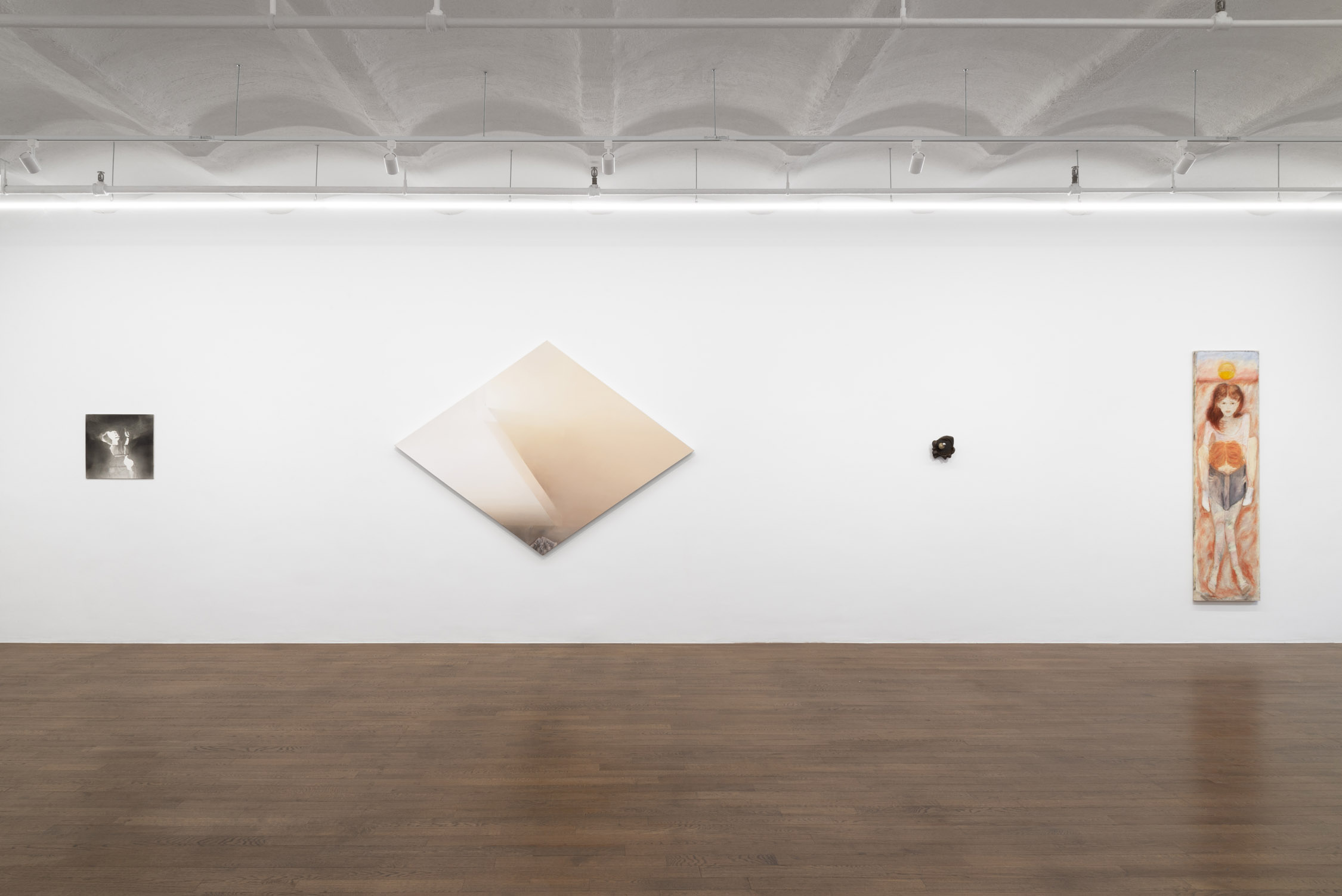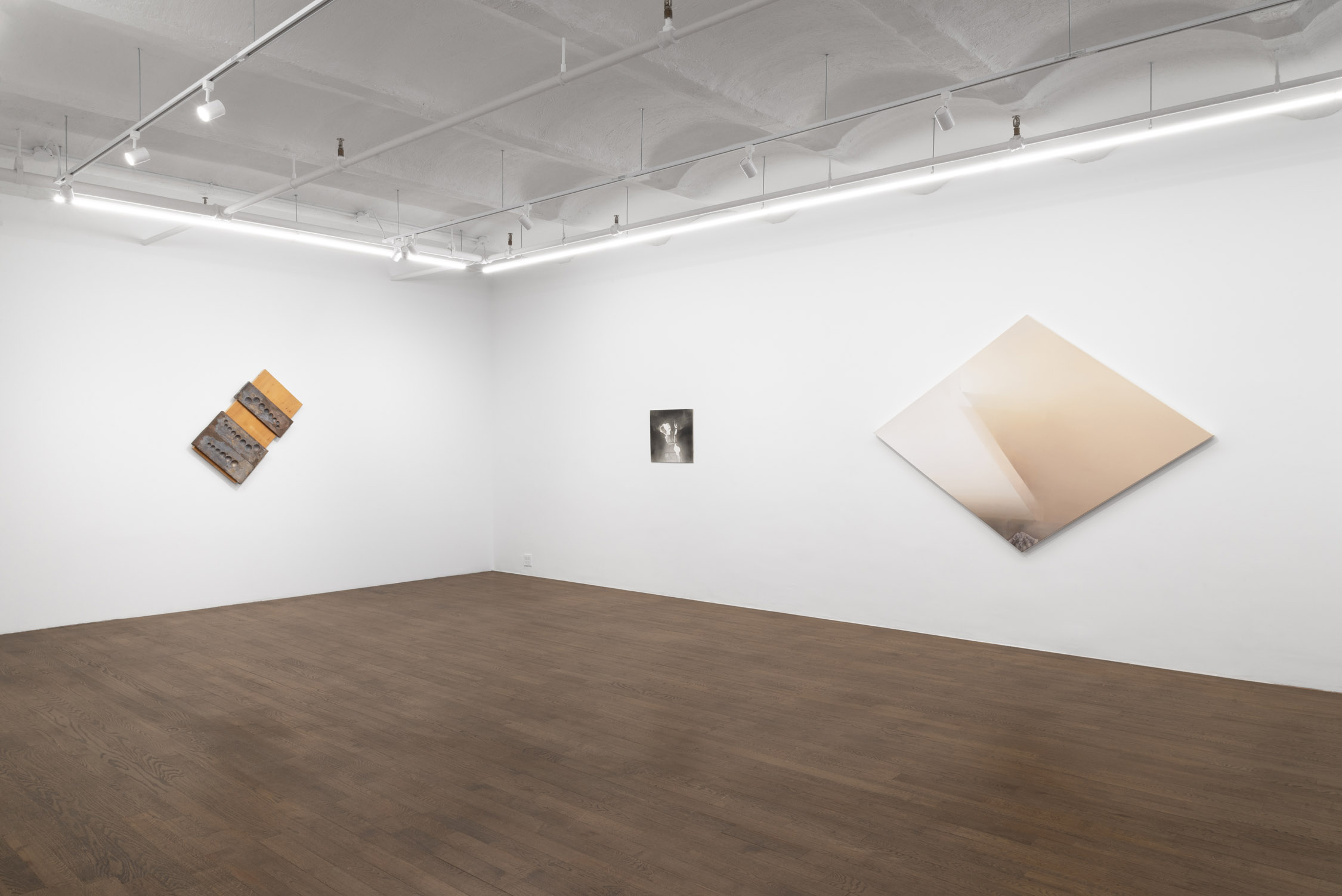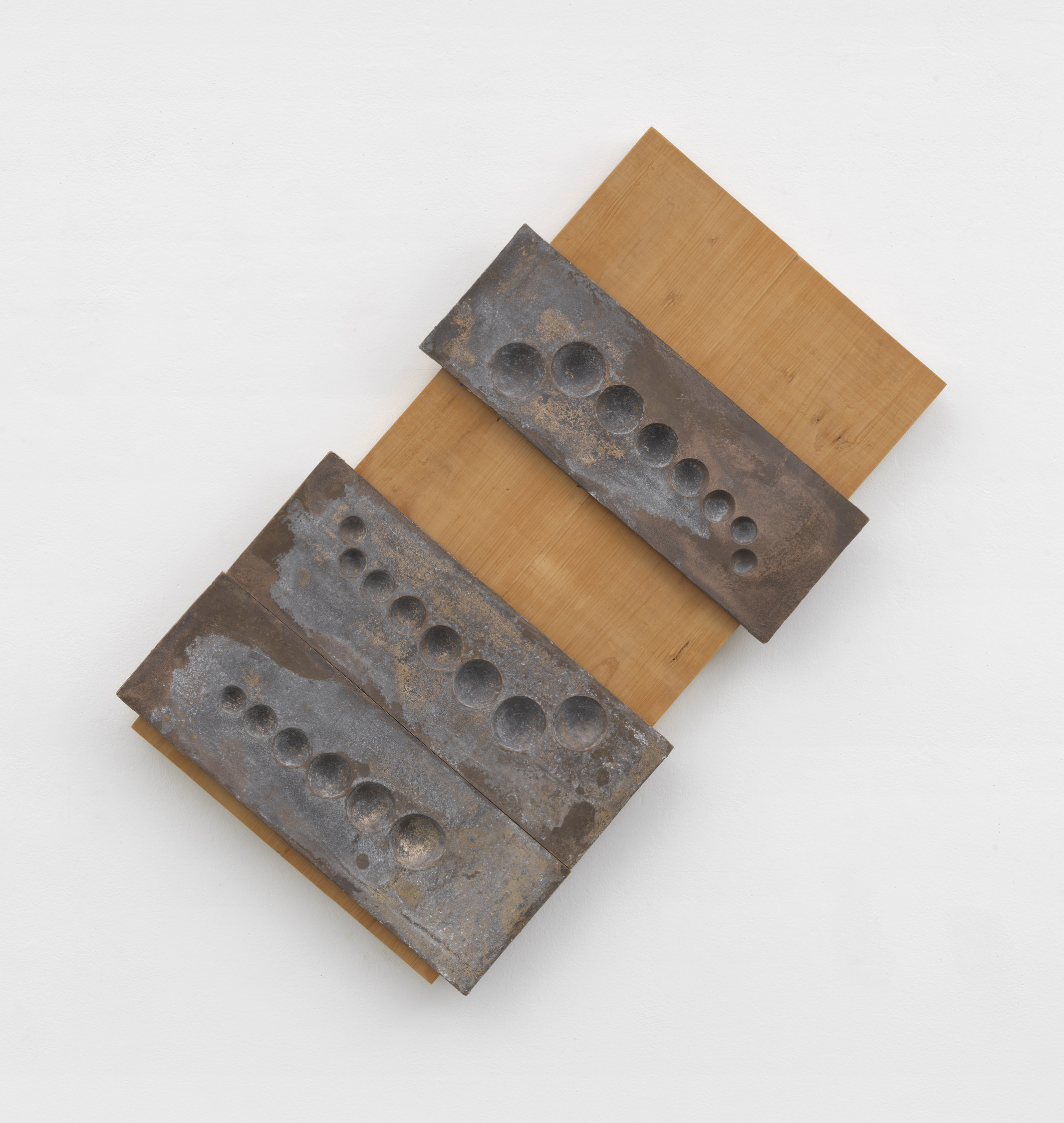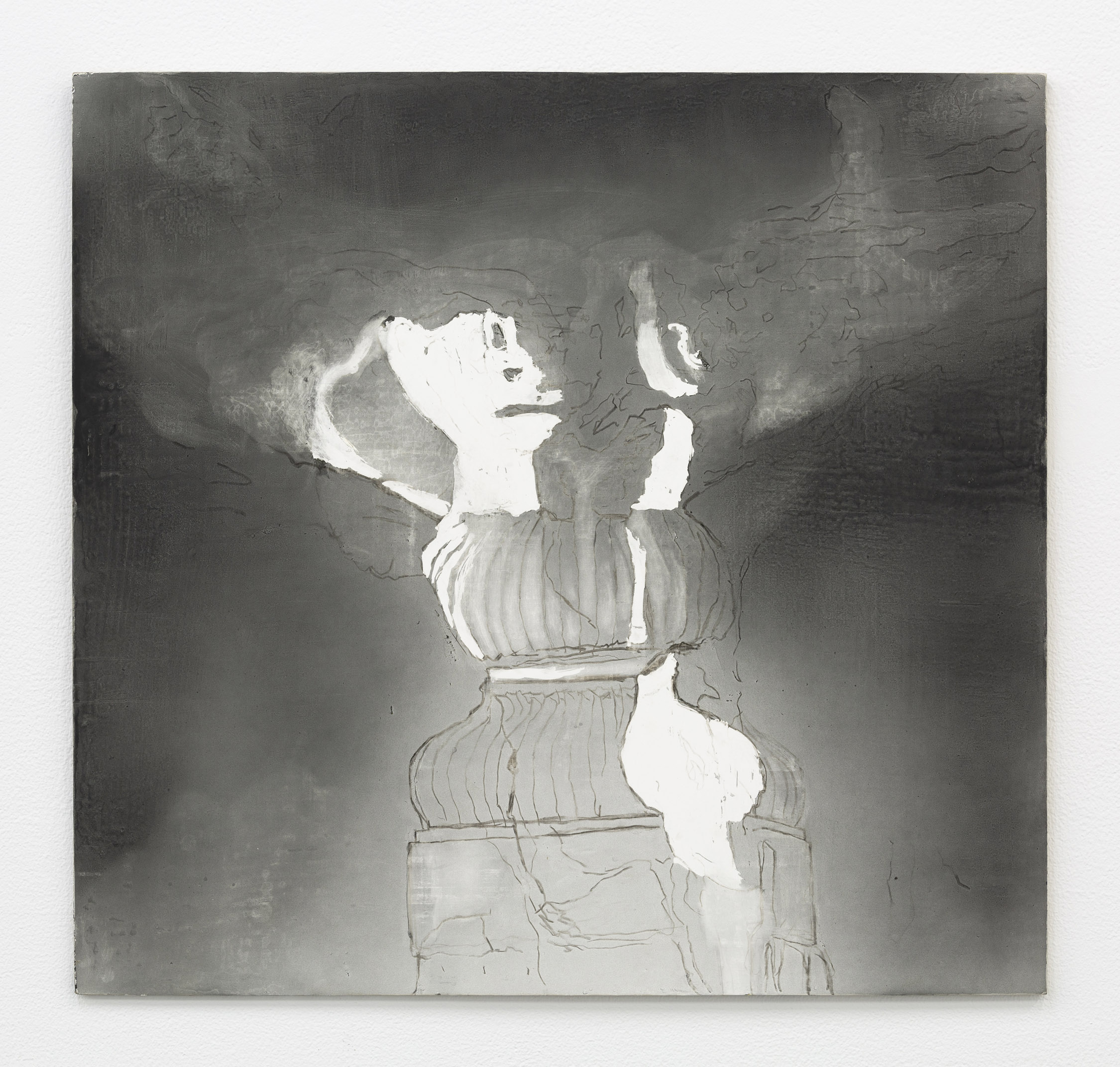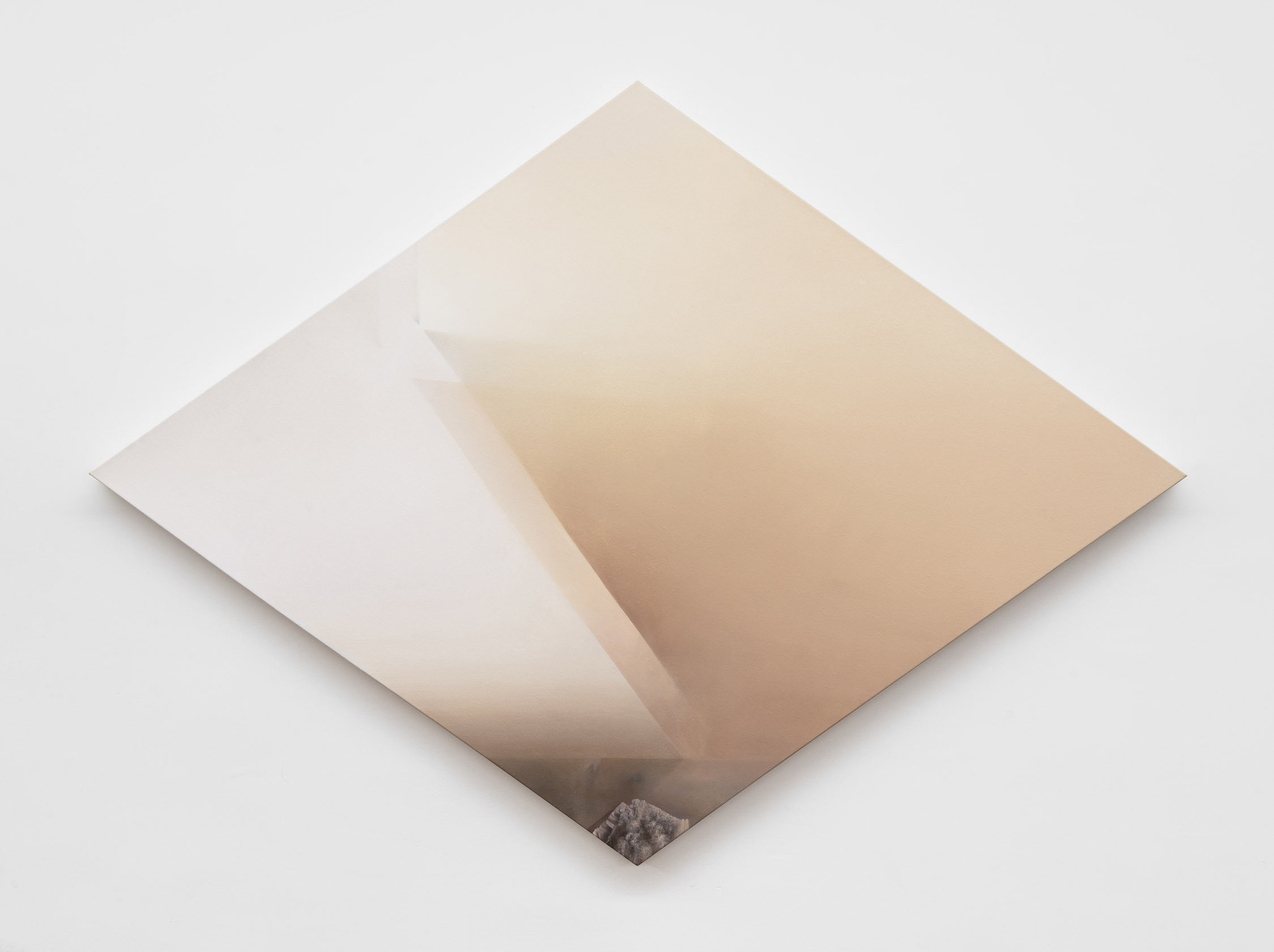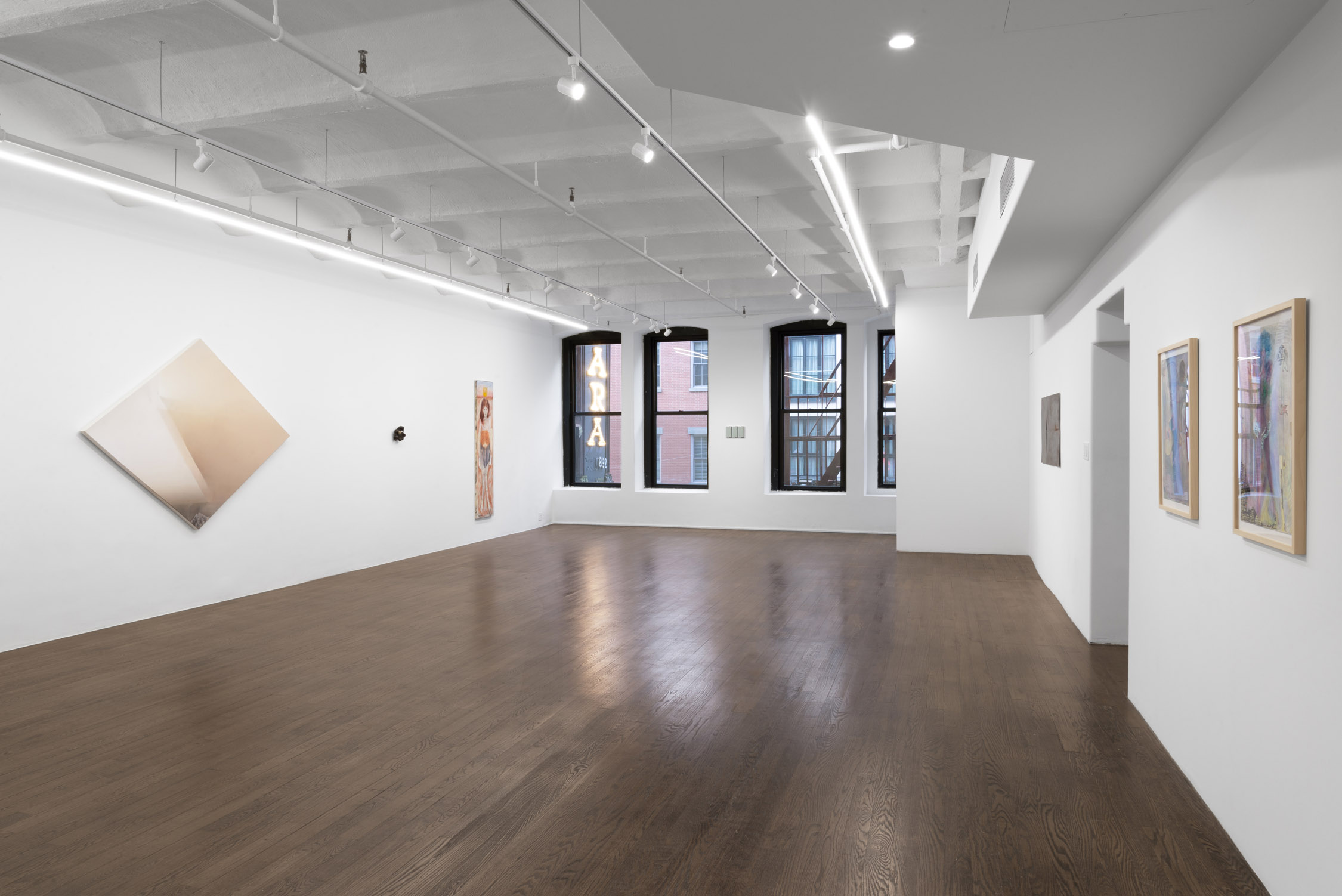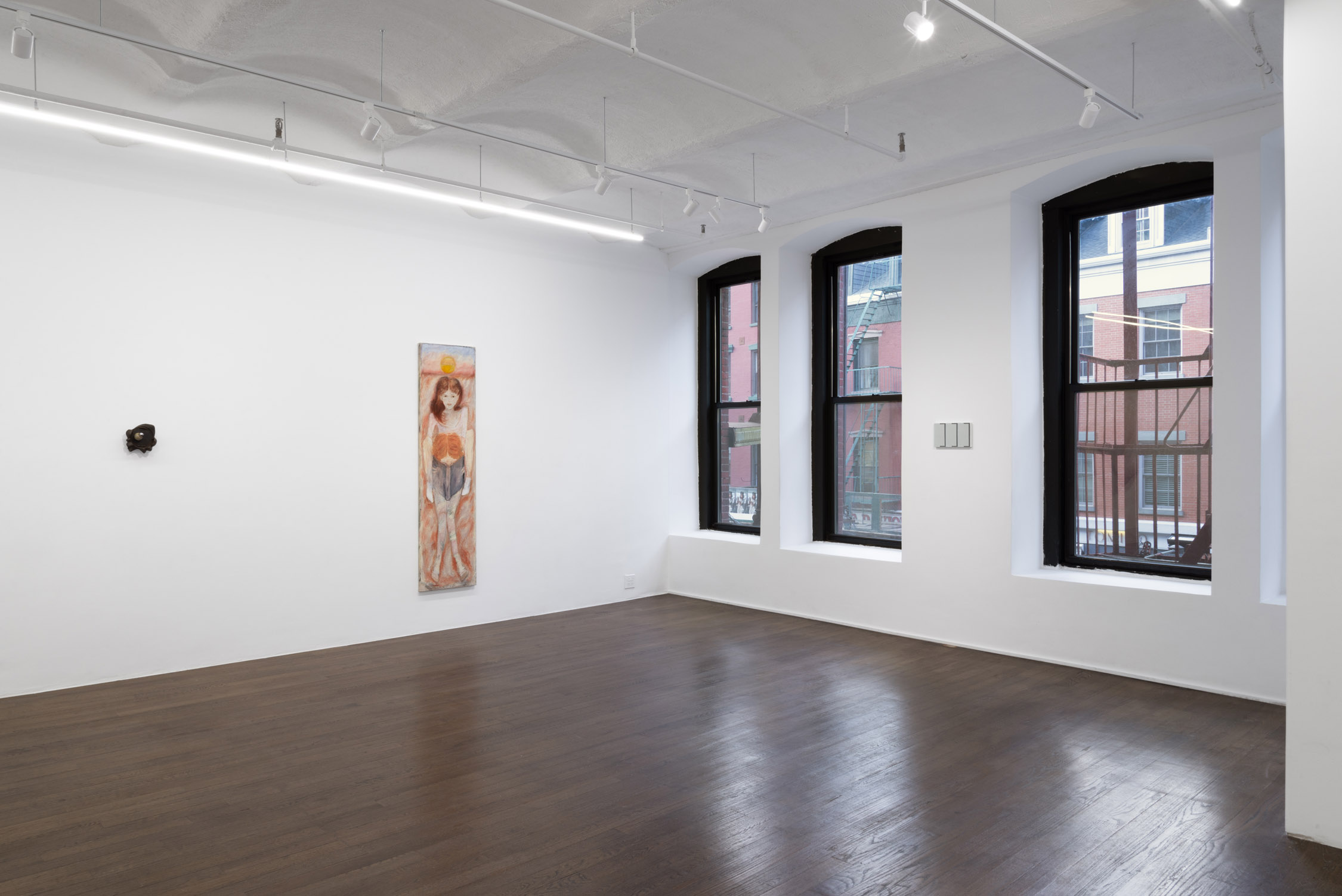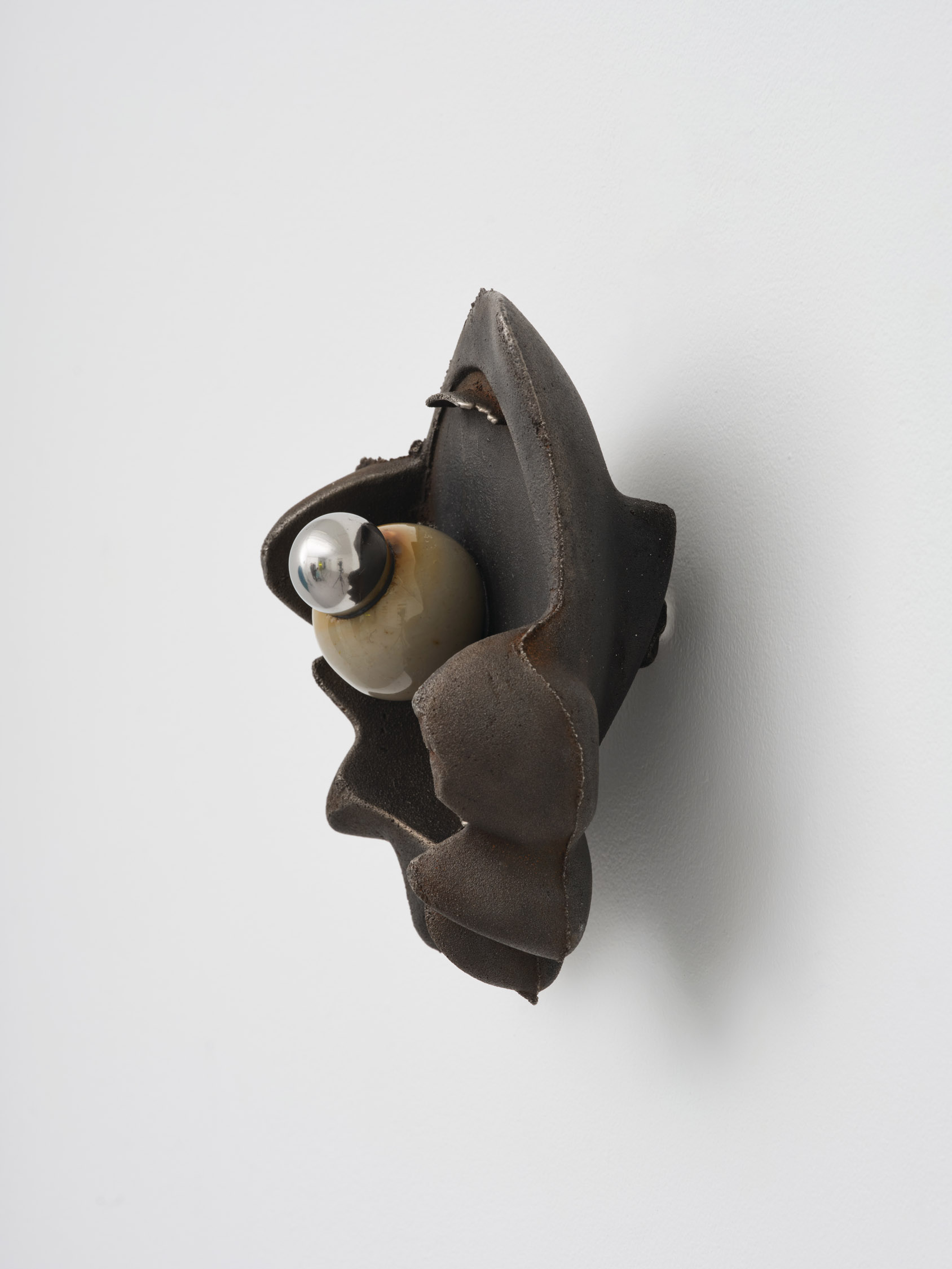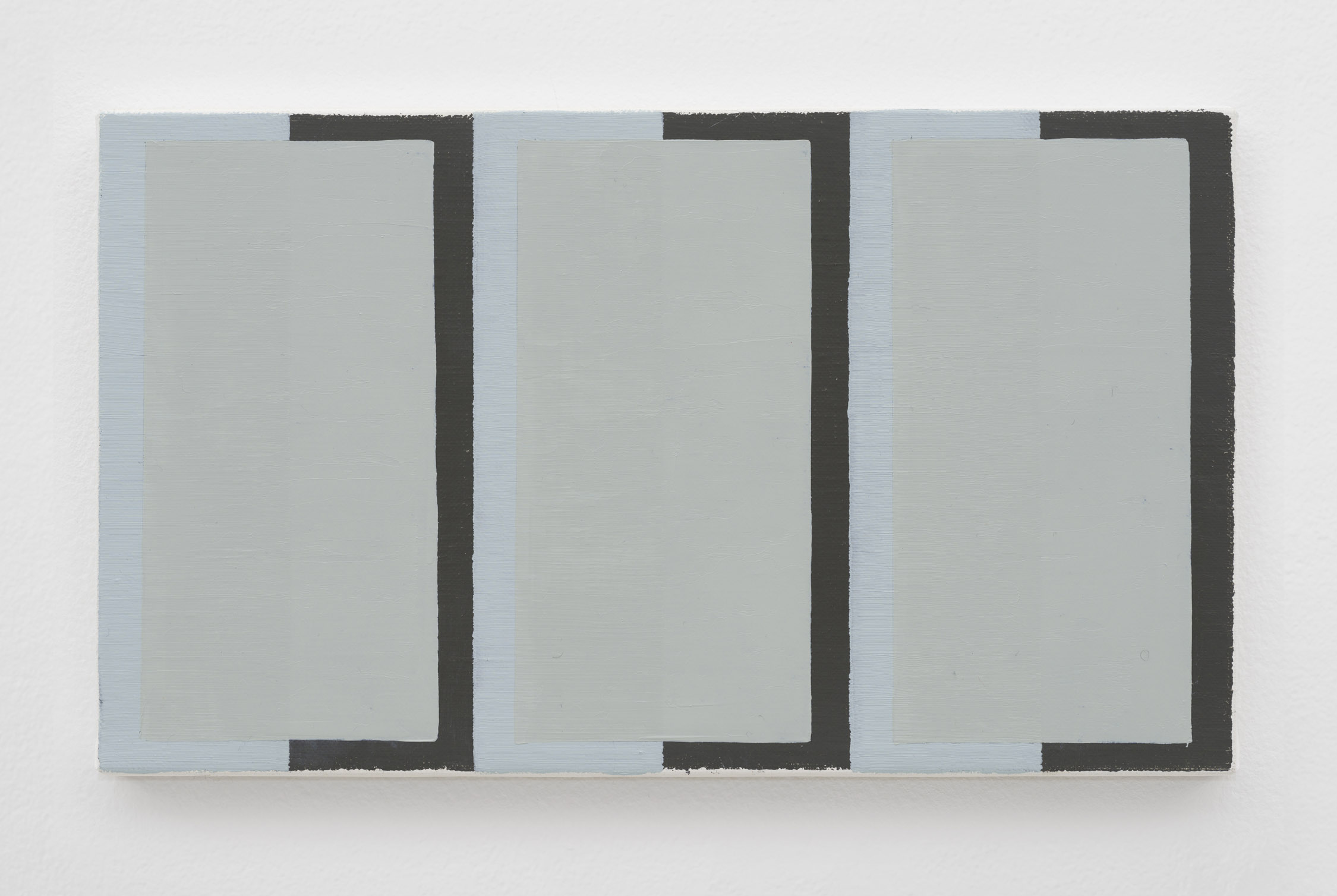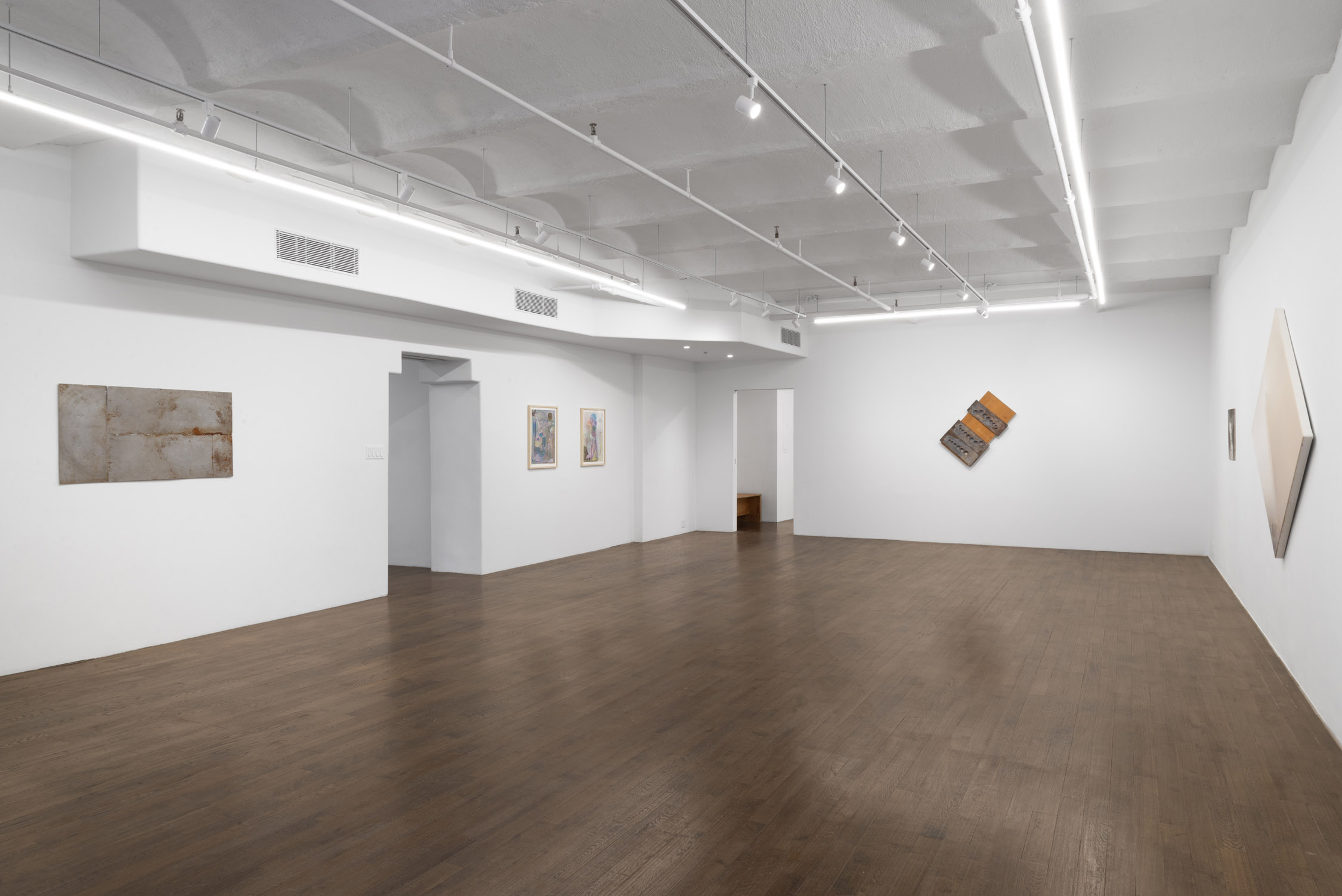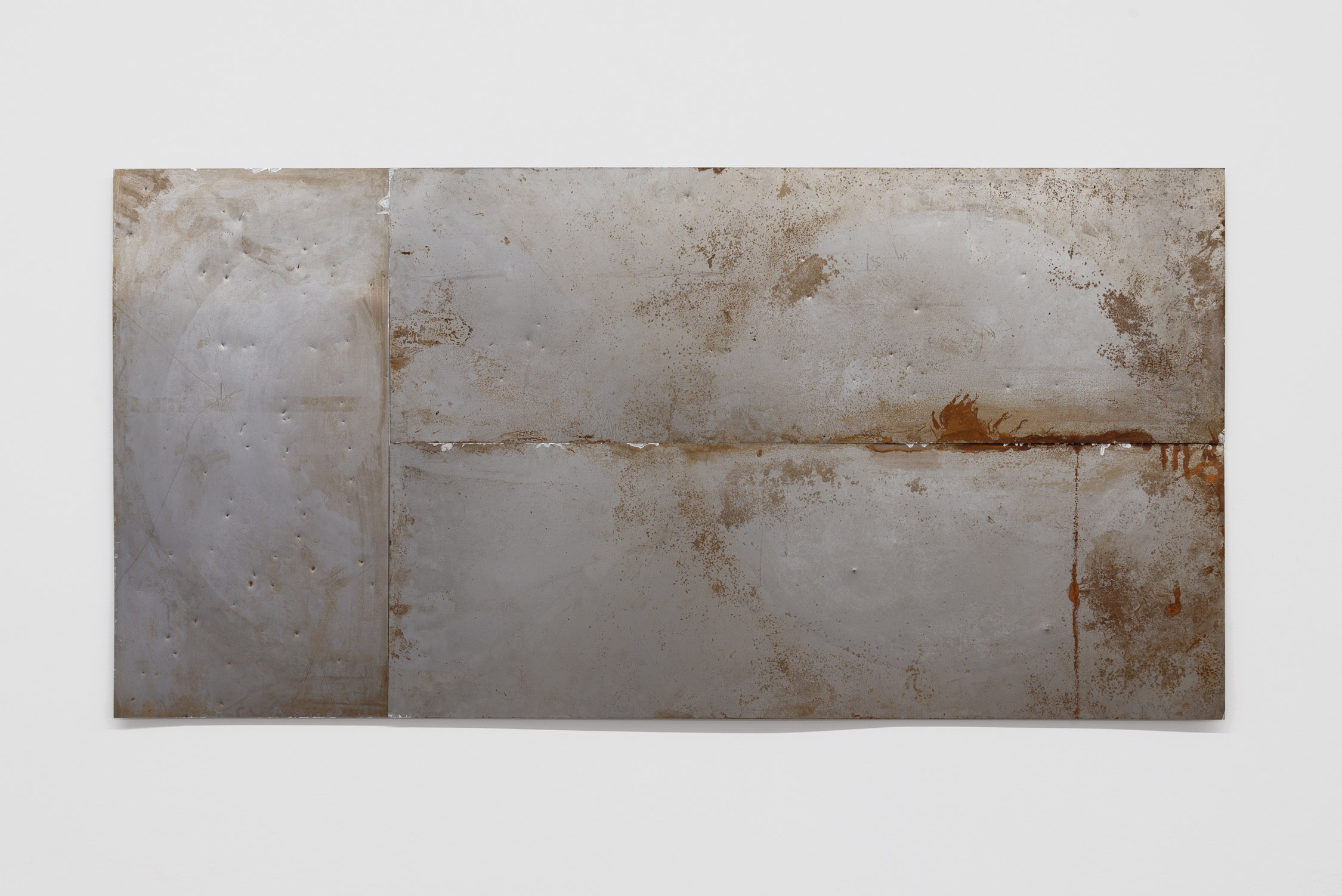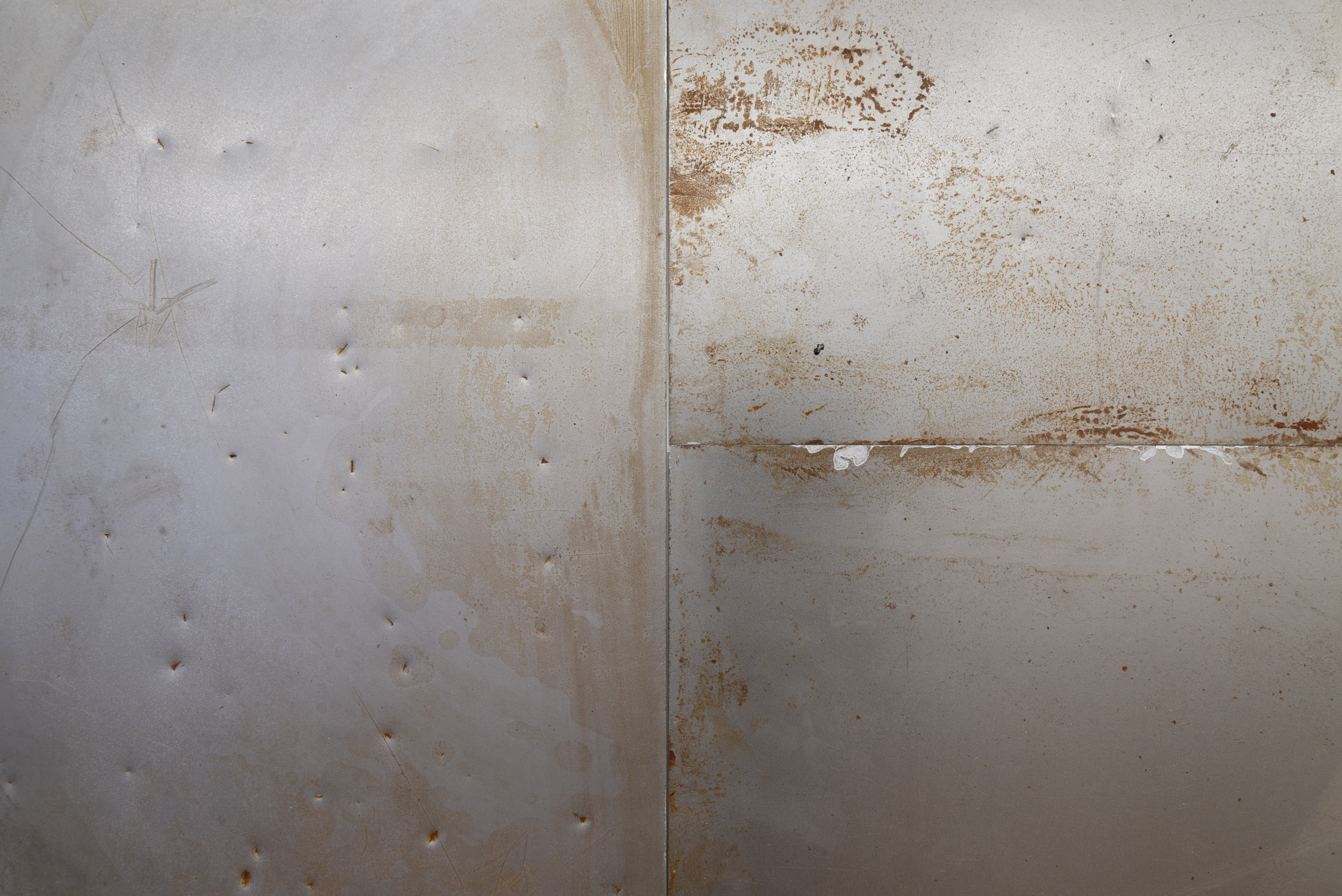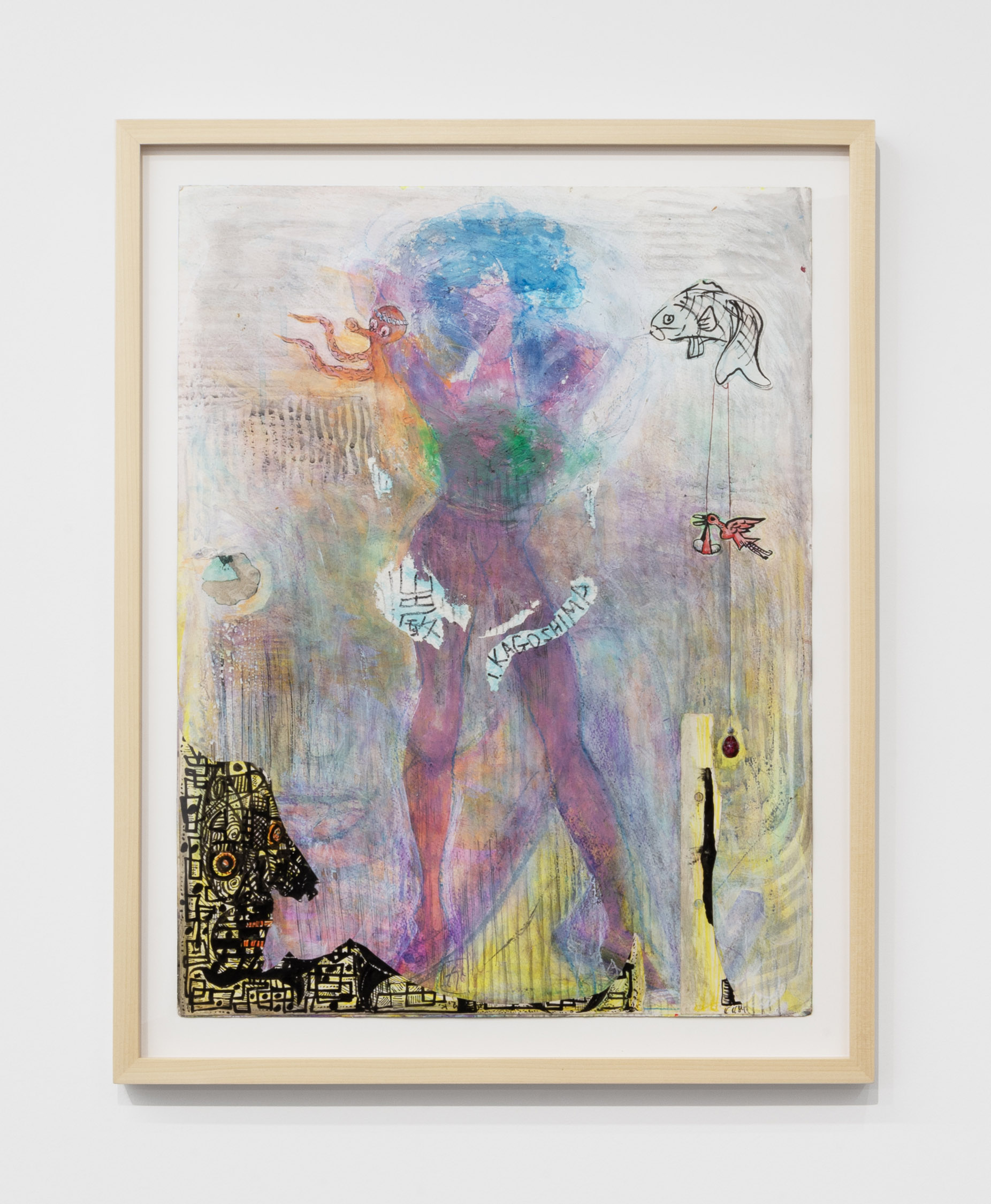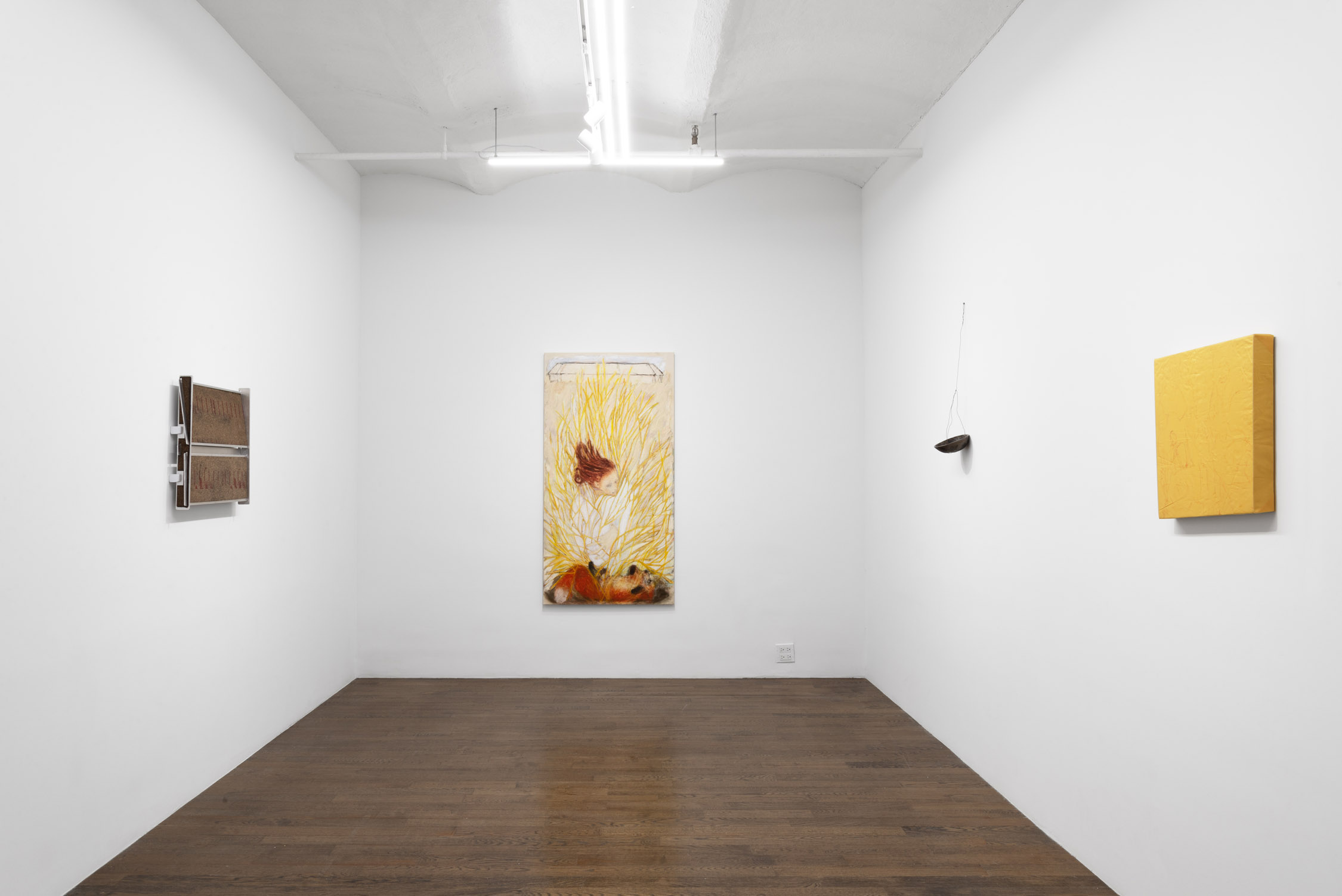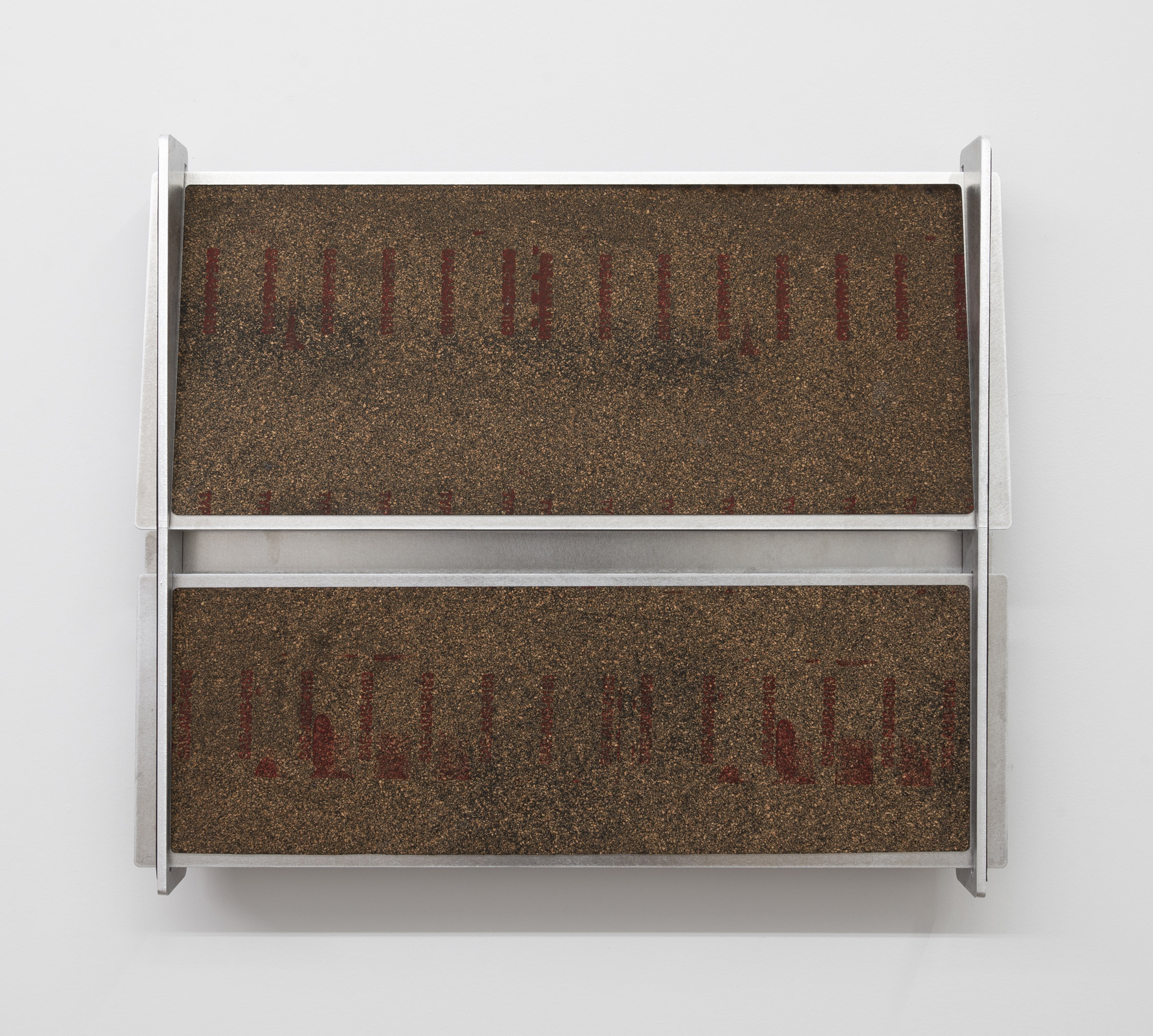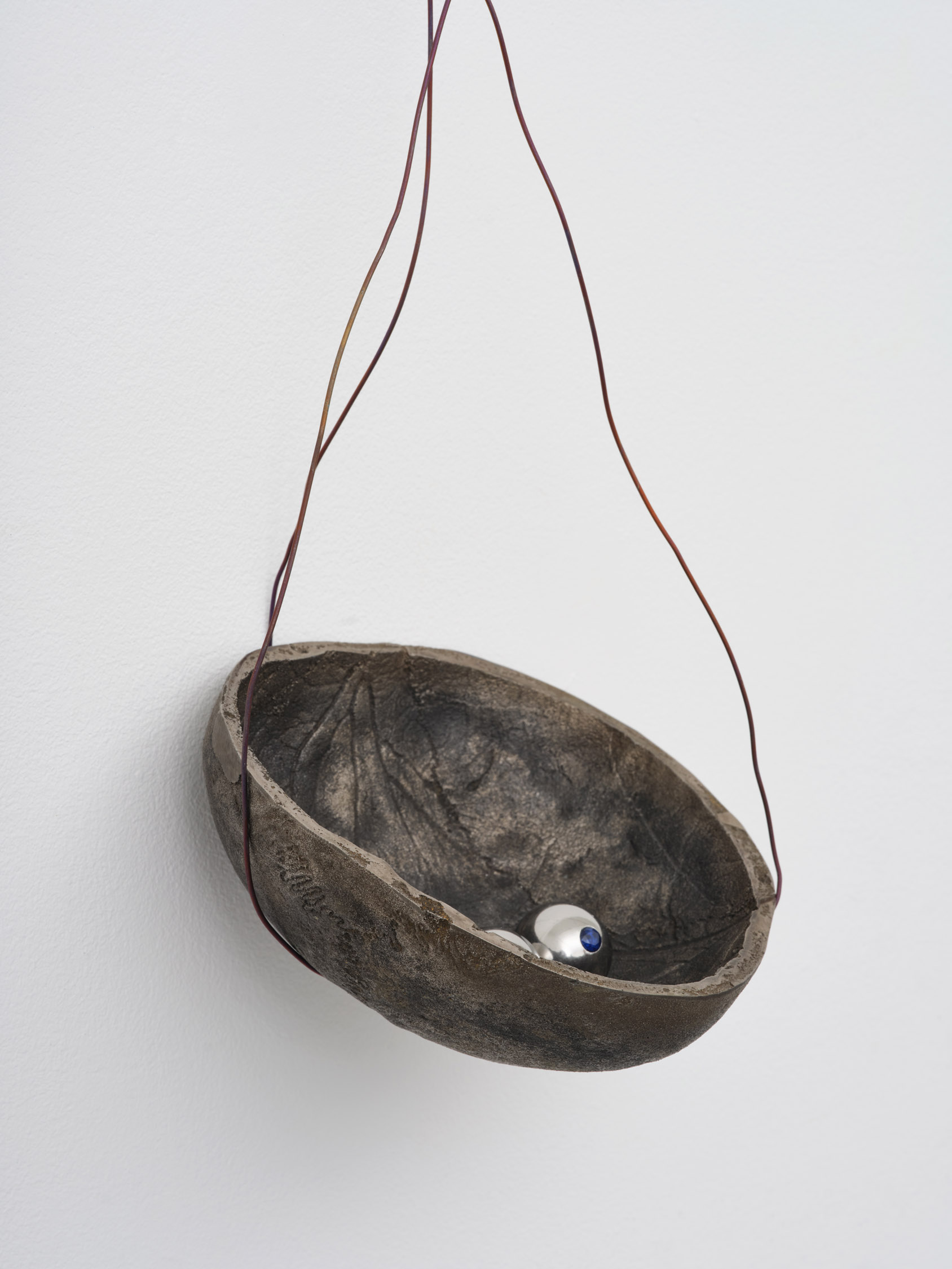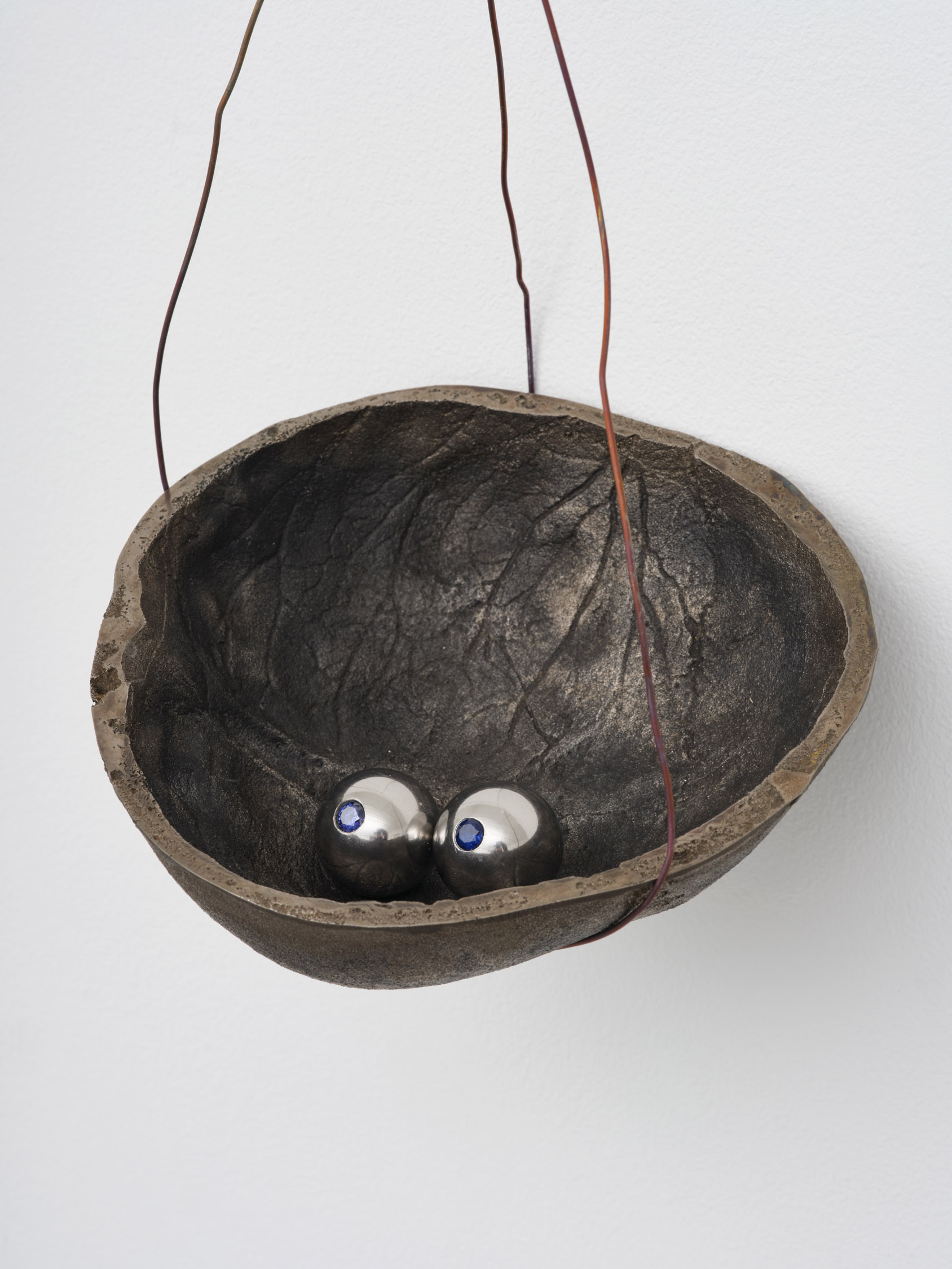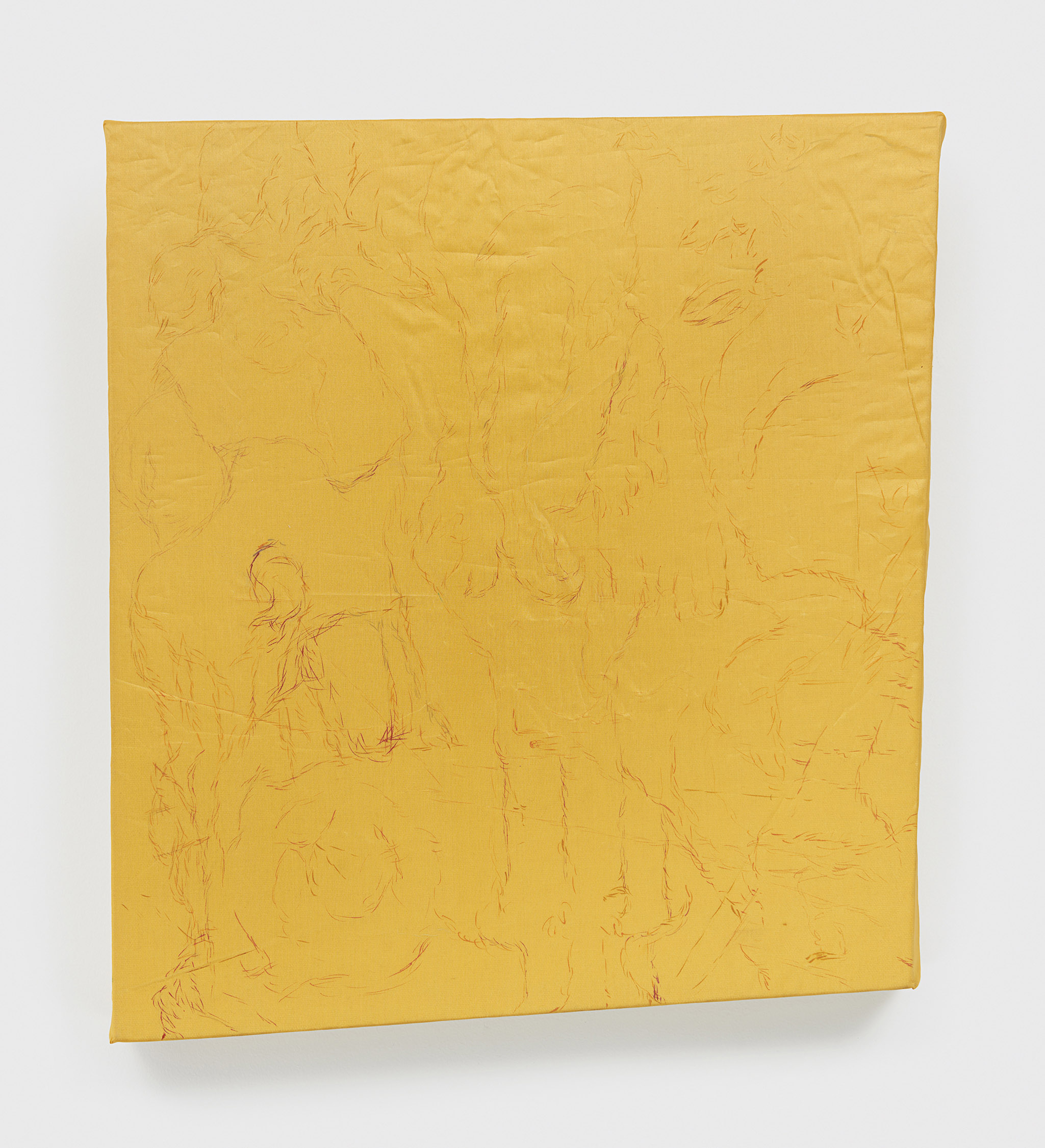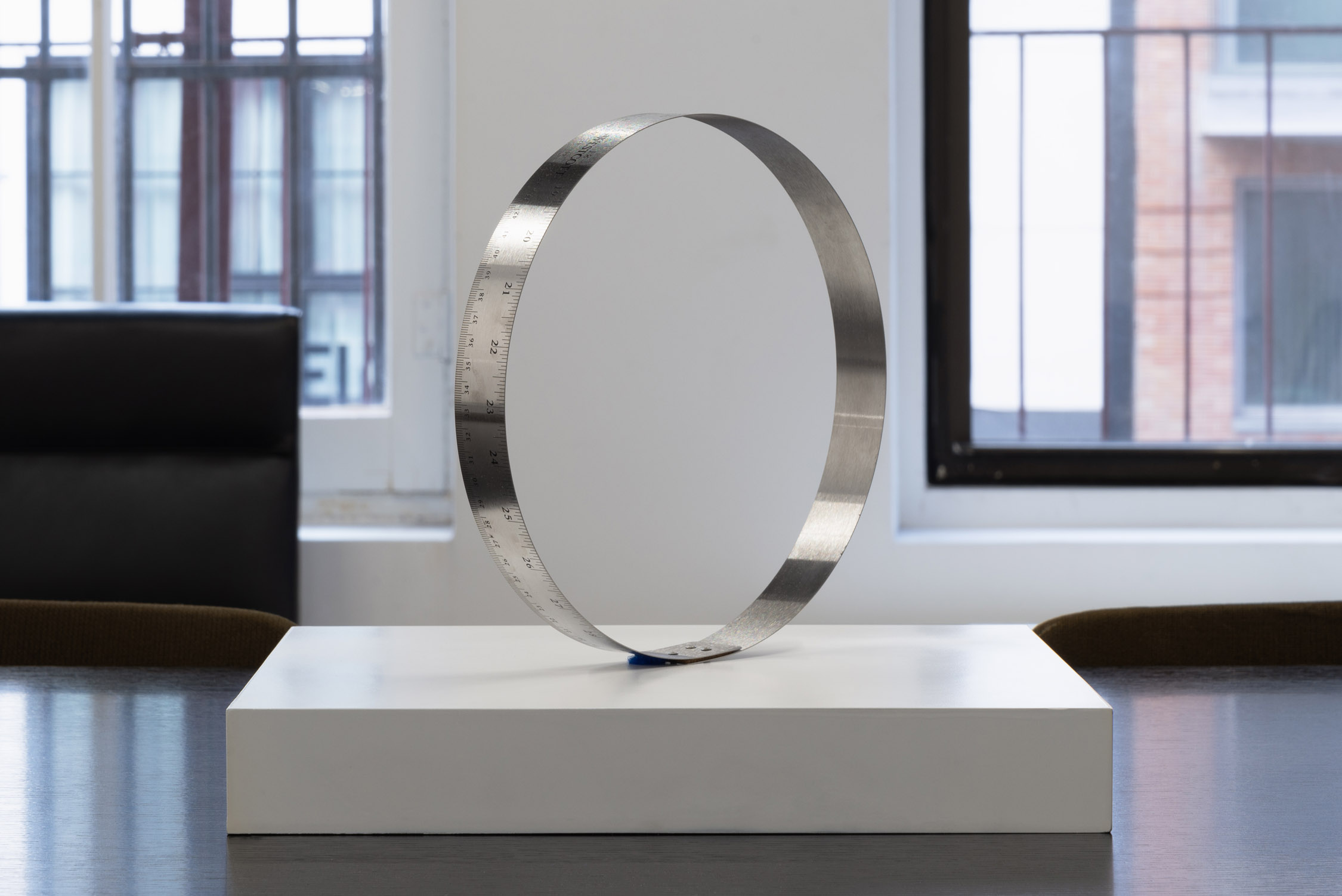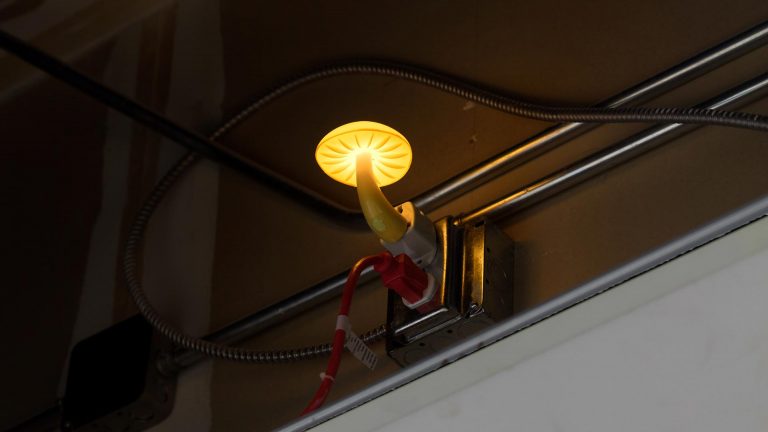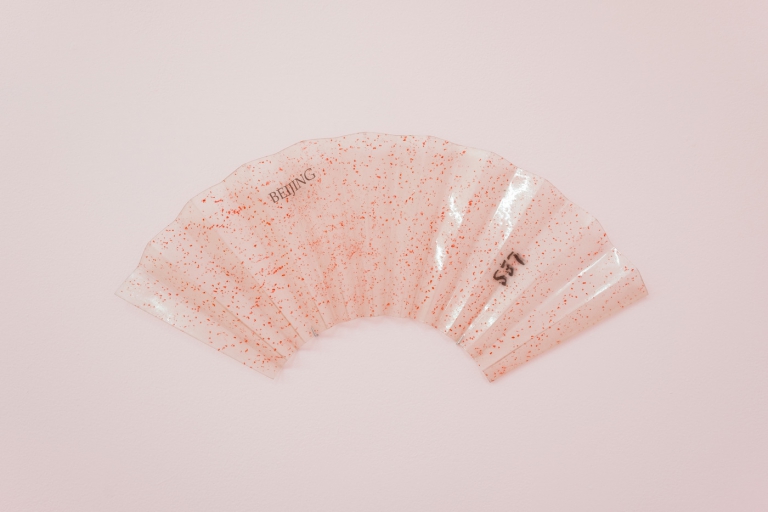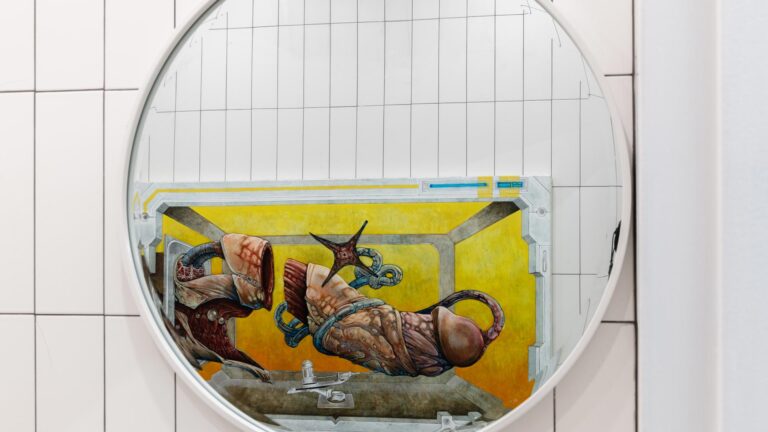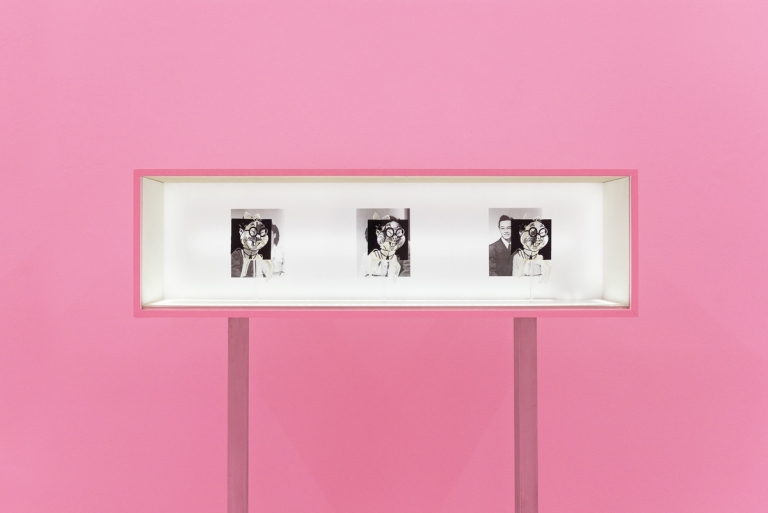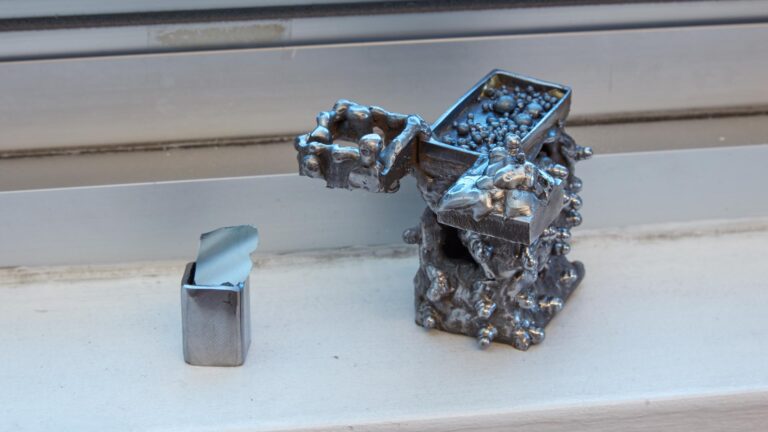Artists: Ben R. Clement, Magalie Comeau, E’wao Kagoshima, Leah Ke Yi Zheng, Beaux Mendes, Elizabeth Orr, Richard Rezac, Kern Samuel, Emma Rose Schwartz, Yui Yaegashi
Exhibition title: Naked Name
Venue: Derosia, New York, US
Date: June 28 – July 27, 2024
Photography: all images copyright and courtesy of the artists and Derosia, New York
Derosia is pleased to present Naked Name, a group exhibition including works by Ben R. Clement, Magalie Comeau, E’wao Kagoshima, Leah Ke Yi Zheng, Beaux Mendes, Elizabeth Orr, Richard Rezac, Kern Samuel, Emma Rose Schwartz, and Yui Yaegashi. The work in this exhibition explores the material poetry of objects through their entanglement with and resistance to language.
The title of the exhibition derives from a Kagoshima work depicting a figure obscured through layers of purple-gray haze and elements of collage. Kagoshima’s name floats across the figure’s thigh, as if performing the role of signature or clothing, yet somewhat lacking in either respect. The simultaneity of “both” and “neither” often occurs in Kagoshima’s work, as here it alerts us to the physical characteristics of the collage as object as well as the relationship between author and subject. The name Kagoshima is both “of” the image and “apart from” it.
A preoccupation with the duality of painting as image and object also appears in the work of Beaux Mendes. Often influenced by direct observation, Mendes treats painting as a transitory medium, as much committed to the description of an image as to its undoing. The smoky expanse of charcoal interferes with the columnar structure in Mendes’ untitled work, rendering its subject with as much clarity as obfuscation. This ethereal quality appears in Magalie Comeau’s large oil painting as well. The airy but earthy diamond is quietly divided into a corner of compression in its lower central point—fragments of landscape contrast with the emptiness around it.
A strong flatness contrasts with Comeau’s spatial projections in Kern Samuel’s Two Circles. The three steel panels comprising the work bear the traces of mark making as two faint circles are perfectly bounded by the two by four foot rectangle. The steel here is both a barrier and a passageway, its subtle reflections recalling that of a window or mirror. A reference to the iconic Rembrandt self portrait with two circles, Samuel’s work is a portrait of sorts, yet in this work the self does not appear in an explicit rendering, but in the liminal space between viewer and artwork. It is a portrait in a state of flux only fully activated by the act of viewing. The tension between self and double appears again in the two works by Emma Rose Schwartz, which depict figures tightly bound by their surroundings and framing. Slowly built up with layers of oil, pastel and paper on canvas, the highly tactile surfaces draw tension with the energetic and mannered forms.
Composed of mineral pigments and ox bone glue on silk over a mahogany stretcher, Leah Ke Yi Zheng’s painting draws a unique attention to its construction. The slightly askew rectangle ripples beneath the fragmentary marks on its surface. A painting that recalls a monochrome but denies a simple reading in almost every way imaginable, Leah’s work is not logical, it plays with and subverts our expectations. This phenomenological experience of looking occurs again in Elizabeth Orr’s works. The freestanding sculptures are rulers that have been molded into perfect circles, bound into an ongoing measurement of its surrounding space, no longer the exacting tools of their initial invention. Orr’s wall-bound work presents us with three sheets of aluminum resting between two vertical supports. The surface of the work is covered in a thin sheet of industrial cork, suggesting that its verso is a measuring device of the same ilk as the sculptures.
The process of concept formation is a continual motif throughout this exhibition, as in the work of Ben R. Clement, whose Vault #1 is composed of two spheres resting in the inner cavity of a cast iron skull cap. The cranial vault, the negative space between the eye and the brain, is the space where perception and self are formed, and in Clement’s sculpture this space is revisited, undone and reconstructed.
Yui Yaegashi’s intimate abstraction describes three repeating rectangular shapes. The subtle chromatic variation between blues creates an optical contrast, highlighting the edges and boundaries of the surface. This tension between boundaries can similarly be found in Richard Rezac’s work Zeno—a rectangular, wall-mounted object made from a waxed pine panel and three slabs of cast bronze. Zeno’s philosophical paradoxes challenging intuitive notions of plurality are invoked in this work. What may seem to be many can also be seen as one. Art can be given life by our desire to describe it, but this language is often inadequate, creating distinctions where they need not exist.
